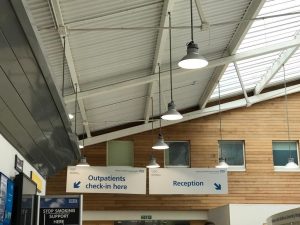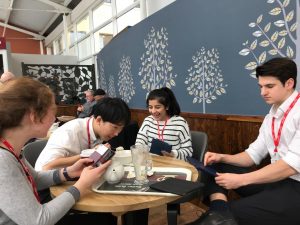After a long and cold term of lectures in second year Medicine, you have this new and exciting thing called a Firm. The light at the end of the Pharm-Endo-Neuro-MCD tunnel. Basically, it’s an introductory three week placement in an allocated speciality in a hospital in London (is Hounslow really London?!) You are assigned in groups of five or so, and are given NHS ID cards for your respective hospital (major perk here). I’m going to run you through my time on my firm in the Acute Medical Unit at my hospital.
The first thing to do is get lost in your chosen hospital. After this, I managed to find the education centre where the kind teaching fellows had tea and croissants waiting for us. We were then taken on a brief tour of the hospital in the hopes of not getting lost again- which did happen.

The next day, I woke up bright and early to get into hospital for my 7.30am HCA shift. This is where you tend to get quite hands on helping the healthcare assistants in hospital. It was really interesting to see what happens in the morning in preparation for the rest of the day. It was a great experience, one I definitely won’t forget. It was pretty cool to change into scrubs and actually have an impact on people’s care during their stay in hospital.
Then, I had a well deserved lunch (if I say so myself) and caught up with the rest of my group at Costa.

In the afternoon, I swapped roles with the other half of my group who then went to do an afternoon HCA shift, whilst I went on to the wards for the first time.
Being on the wards in the AMU is strikingly different to other wards in hospital. Patients tend to stay for a much shorter average of 24-48 hours before they are either discharged home or moved to a specialist ward such as Respiratory. There is a quick turnover of patients and it’s rare to see the same one time and time again. Shadowing the consultant was enriching, I learnt a lot, but it was also quite hectic as AMU is a dynamic and fast paced environment. Luckily, the foundation doctor was able to explain that a troponin level in the tens of thousands combined with cardiac symptoms could suggest the patient had a myocardial infarction.
It was extremely rewarding to be able to speak to loads of patients of a variety of ages from different backgrounds. One of the highlights of my time on my placement was speaking to a really nice and humorous elderly patient for over an hour as she told us about her entire life so far. Before I knew it, my three weeks were over. I’d seen a pacemaker being put in, countless ward rounds, taken loads of histories and spent a day with a GP. I’m looking forward to returning in my third year as part of my clinical placement!





One comment for “A Day in the life of a Medic: Firms Edition”
Comments are closed.